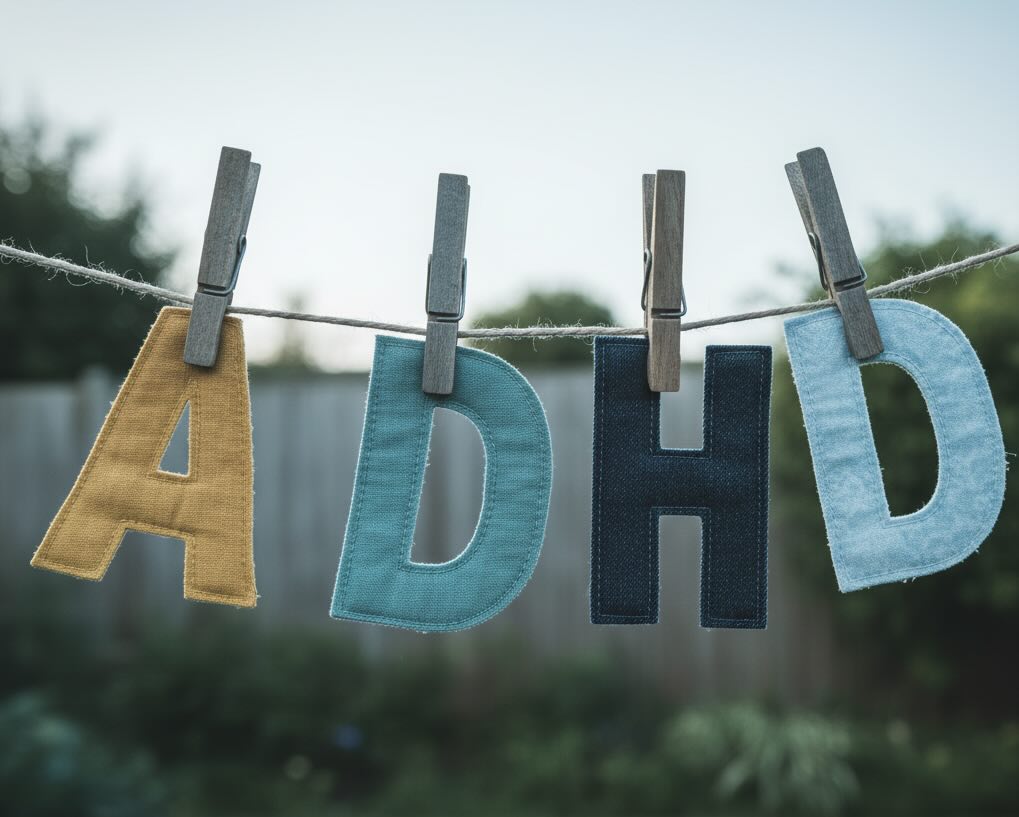What is Autism Spectrum Disorder?
Autism Spectrum Disorder (ASD) is a neurodevelopmental condition defined by:
- Persistent differences in social communication and social interaction, and
- Restricted and/or repetitive patterns of behaviour, interests, or activities, often including sensory differences (e.g. being very sensitive to sound, light, touch, taste or movement).
“Spectrum” doesn’t mean a simple line from “mild” to “severe”. It describes a wide range of traits, strengths and support needs, which can also change over time and across situations.
Autism frequently occurs alongside other conditions such as ADHD, intellectual disability, language disorders, anxiety, depression, gastrointestinal problems, sleep difficulties and epilepsy.
ASD Symptoms
Core features
Social communication & interaction differences might include:
- Finding small talk or “unwritten social rules” confusing or exhausting
- Preferring very direct, literal communication; missing hints or sarcasm
- Difficulty reading facial expressions, body language or tone, or relying on learned “scripts” to get by
- Struggling to start or maintain conversations, especially in groups
- Preferring one-to-one interactions or online communication
- Intense focus on favourite topics that may dominate conversation
- Differences in eye contact, facial expression or gestures (using them less, differently, or more intensely than others expect)
- Finding it hard to make or keep friends, or feeling like you’re always “on the outside looking in”.
Restricted/repetitive behaviours and interests might include:
- Strong, focused interests (sometimes called “special interests”) that you can think about or talk about for long periods
- Repetitive movements such as rocking, hand-flapping, tapping, pacing or fidgeting (“stimming”), which can help with regulation, focus or comfort
- Strong need for routines, predictability and clear plans; distress when things change unexpectedly
- Rigid patterns around food, clothing, routes or daily rituals
- Deep interest in how things work (e.g. systems, lists, timetables, fictional universes, collections, facts)
Sensory differences are also common and may include:
- Being very sensitive to noise, light, touch, smell or taste (e.g. tags in clothes, loud shopping centres)
- Or seeking strong sensory input (e.g. spinning, deep pressure, certain textures or sounds)
- Difficulty filtering “background” sensations, like hearing every conversation in a room at once
Physical and health-related features
Autism itself is about how the brain develops, but autistic people more often experience:
- Sleep problems (difficulty falling asleep or staying asleep)
- Gastrointestinal issues (constipation, diarrhoea, abdominal pain)
- Coordination or motor differences (clumsiness, dyspraxia-like difficulties)
- Epilepsy or seizure disorders in a minority
- Higher rates of anxiety, depression and sometimes self-harm or suicidal thoughts, especially in adolescence and adulthood.
How it may feel day-to-day
Many autistic people describe:
- Feeling like they’re “masking” or acting all day to seem non-autistic, and then crashing with exhaustion later
- Experiencing meltdowns (overwhelming emotional or sensory overload with loss of control) or shutdowns (going quiet, withdrawn or frozen) when overwhelmed
- Chronic anxiety about social situations, changes, or sensory overload (e.g. noise, crowds, bright lights)
- Burnout after long periods of masking, stress or lack of support – with increased fatigue, depression, or loss of previously manageable skills
- Feeling relief and self-understanding when they finally receive an autism diagnosis, especially in adulthood.
When to seek help
Consider seeking an autism assessment or specialist consultation if you:
- Recognise many of the traits above, and those traits are causing distress or making school, work, or relationships much harder
- Have long-standing difficulties with social communication plus strong routines, sensory differences or intense interests
- Are repeatedly misdiagnosed (for example, anxiety, depression, borderline personality disorder), and treatments don’t fully fit your experience.
Seek urgent help/emergency care if:
- There is active self-harm, suicidal thoughts with intent, or behaviour that puts you or others at immediate risk
- There is severe aggression, self-injury, or sudden changes in thinking (e.g. confusion, hallucinations) that may signal another medical or psychiatric emergency
If you’re in immediate danger, contact local emergency services or your nearest crisis service right away.
How Do You Assess for ASD?
Single disorder screening tools like the Social Communication Questionnaire (SCQ) and the Social Responsiveness Scale (SRS-2) for children and adolescents and the Autism Spectrum Quotient (AQ) or RAADS-R for adults do not provide a diagnosis on their own, nor do they identify co-occurring conditions.
A thorough diagnosis usually includes several steps:
- Start with a broad multi-condition mental health assessment: A multi-condition tool, like Loffty, helps avoid tunnel vision (for example, focusing only on mood without noticing underlying neurodevelopmental differences) and can:
- Flag autistic traits alongside anxiety, depression, ADHD, and other conditions
- Highlight areas of strength and difficulty across your life
- Give you something concrete to take to your GP, psychiatrist, psychologist, or other specialist
- Assess for commonly co-occurring conditions like anxiety, depression, ADHD, OCD or other mental health conditions.
- Share your comprehensive assessment with a multidisciplinary team (e.g. psychologist, psychiatrist, speech-language therapist, occupational therapist), or a single experienced specialist, depending on local practice. They will then undertake a full diagnostic process, often including:
- Obtaining a detailed developmental history (early milestones, play, friendships, behaviour, sensory patterns)
- Conducting a clinical interview about current strengths, challenges and mental health
- Structured observation of social interaction, communication and behaviour, sometimes using tools such as the ADOS-2 (Autism Diagnostic Observation Schedule-2) and ADI-R (Autism Diagnostic Interview–Revised), where available.
- Cognitive and language assessments if needed.
- Consideration of other explanations (e.g. hearing impairment, intellectual disability, trauma, social anxiety).
- Medical and associated assessments: Depending on age and presentation, clinicians may also consider:
- Hearing and vision checks
- Screening for sleep, gastrointestinal, neurological or genetic conditions
What to bring to an appointment
It can be helpful to bring:
- A short timeline of key developmental events and concerns
- Examples of social situations that are hard, and what happens during meltdowns or shutdowns
- Notes about sensory sensitivities and special interests
- School reports, previous assessments, or feedback from employers, where available
- Questions about diagnosis, supports, funding/benefits, workplace or school accommodations
Pathways, waiting times and who can diagnose vary by country and region, so your GP or local autism organisation can help you navigate your local system.
How Do You Treat/Support ASD?
Autism isn’t something that needs to be “cured”. Support focuses on:
- Understanding your autistic profile
- Adjusting environments and expectations
- Building skills and supports around communication, sensory needs, daily living and mental health.
Foundations: understanding and environment
Helpful foundations often include:
- Psychoeducation and acceptance – learning about autism from both clinical and lived-experience perspectives, and challenging internalised stigma
- Predictable routines – visual schedules, clear plans and advance warning of changes where possible
- Sensory supports – noise-reducing headphones, sunglasses, clothing choices, stimming, movement breaks, access to quiet spaces
- Communication supports – plain language, clear expectations; for some, speech-language therapy or augmentative and alternative communication (AAC)
- School or workplace accommodations – flexibility around lighting, noise, social demands, executive functioning support and how performance is assessed
Supports across the lifespan
Depending on age and needs, supports may include:
- Speech and language therapy: for social communication, understanding and using language, or Augmentative and Alternative Communication (AAC) which is any method of communication that supports (augmentative) or replaces (alternative) spoken speech when someone finds talking difficult or impossible. It covers a wide range of tools and strategies, for example:
- No-tech / low-tech AAC such as:
- gestures, facial expressions, pointing
- Communication boards or books with pictures, symbols, words or letters
- Writing or spelling on paper/whiteboard
- High-tech AAC
- Speech-generating devices (SGDs)
- Apps on tablets/phones that “speak” selected words or symbols
- Eye-gaze or switch-access systems for people with very limited movement
- No-tech / low-tech AAC such as:
Speech-language therapists use AAC to help people communicate needs, thoughts, feelings and choices as independently and effectively as possible. It’s not “giving up on speech”, in fact many people use AAC alongside spoken language, and for some, AAC actually supports spoken language development.
- Occupational therapy: for sensory processing, daily living skills, motor coordination and adapting environments
- Educational support: individual learning plans, support teachers, adjustments to curriculum and assessment
- Social communication or social skills groups: ideally, neurodiversity-affirming and focused on mutual understanding and self-advocacy, not just masking
- Psychological therapies for co-occurring conditions:
- CBT adapted for autistic people has evidence for reducing anxiety in adolescents, with emerging evidence for adults.
- Other therapies (e.g. acceptance and commitment therapy, trauma-focused work, group therapies) are being studied and may help with mood, self-esteem and coping.
- Support for daily life and work: executive function coaching, supported employment programmes, peer mentoring and disability support services
Medication
There is no medication that “treats autism” itself. Medications can sometimes help with the specific co-occurring issues identified by a comprehensive Loffty assessment, such as:
- ADHD symptoms
- Anxiety, depression or obsessive–compulsive symptoms
- Sleep problems
- Severe irritability, aggression or self-injury.
Medication examples include stimulants or non-stimulants for ADHD, SSRIs for mood/anxiety, and certain atypical antipsychotics – all with important side effects and monitoring needs. Any decision to start, change or stop medication should be made with a qualified prescriber who understands autism, considers physical health and co-occurring conditions, and respects the person’s own goals and preferences.
ASD Research
Prevalence and diagnosis
Large meta-analyses suggest global ASD prevalence around 1–2% of the population, with considerable variation by region and method.
Recent surveillance data (for example, from the US CDC) report autism diagnoses in about 1 in 31 eight-year-olds at some sites, with rates increasing over time as awareness and screening improve.
Research shows:
- Autism is diagnosed more often in boys than girls (historically around 3–4:1), though this gap narrows when we look at higher-quality studies and better recognition of autistic girls, women and gender-diverse people.
- Many autistic adults, especially older adults and those who mask well, remain undiagnosed and lack access to appropriate support.
A recent large genetic study supports what many autistic people and clinicians already know: autism isn’t one single condition with one single cause, but a set of overlapping neurodevelopmental pathways with diverse genetic and environmental influences.
There is no good scientific evidence that vaccines cause autism. Large studies continue to find no causal link despite persistent misinformation.
Co-occurring conditions and mental health
Systematic reviews show high rates of anxiety and depression in autistic adults, and frequent co-occurring psychiatric diagnoses overall, emphasising the need for accessible, adapted mental health care.
Intervention evidence
Recent umbrella reviews and meta-analyses highlight that:
- Many early childhood interventions show small to moderate average effects on some developmental outcomes, but study quality is mixed and long-term outcomes are less clear
- CBT adapted for autistic youth has moderate evidence for reducing anxiety; evidence for adults and for other therapies is growing, but still limited
- Autistic adults and advocates are calling for research that focuses more on quality of life, autonomy, mental health, safety and acceptance, not just on reducing “symptoms”.
Books and Resources about ASD
Here are a few widely recommended, neurodiversity-aware resources:
- Uniquely Human: A Different Way of Seeing Autism, Barry M. Prizant. Explores autism through stories and clinical experience, emphasising understanding and supporting autistic people rather than “fixing” them.
- I Think I Might Be Autistic: A Guide to Autism Spectrum Disorder Diagnosis and Self-Discovery for Adults. Cynthia Kim. A practical, validating book for adults who suspect they might be autistic and are exploring assessment or self-identification.




